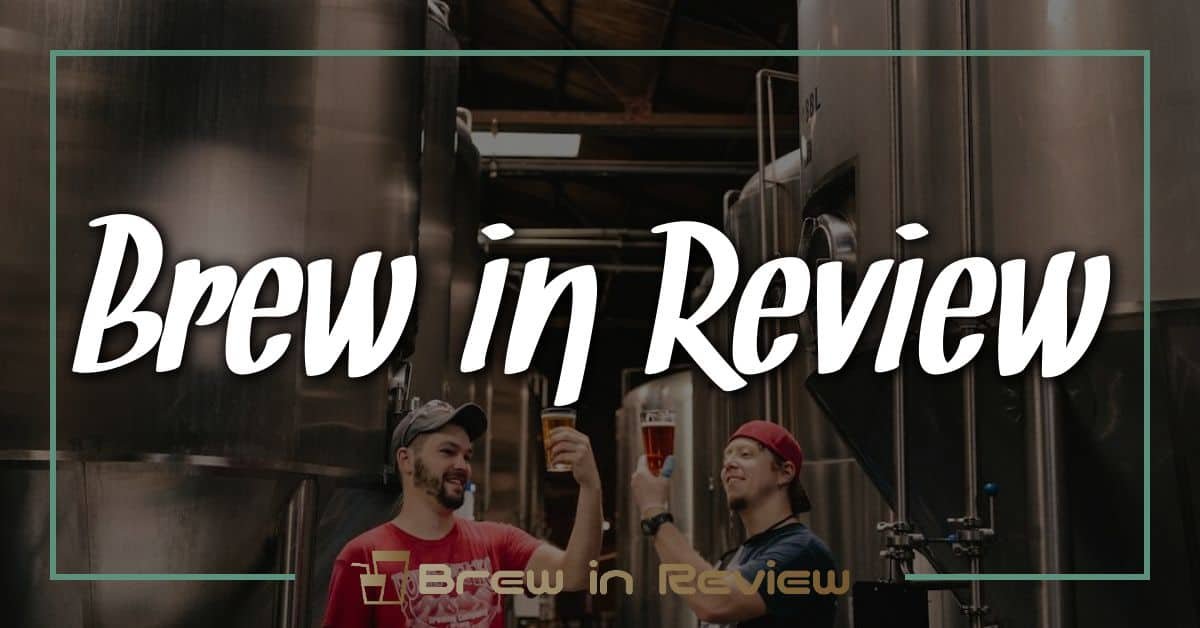There’s something special about savoring a good beer. Whether you’re at a cozy pub or enjoying a backyard barbecue, knowing how to judge beer like a pro can elevate your experience. It’s not just about taste; it’s an art that combines aroma, appearance, and mouthfeel.
I’ve spent years exploring the world of craft brews, and I’ve learned that appreciating beer goes beyond simply drinking it. With a few tips and tricks, you can develop a keen palate and impress your friends with your newfound expertise. Let’s dive into the essentials of beer judging and discover how to turn your casual sipping into a refined tasting experience.
Understanding Beer Judging
Judging beer requires more than a casual sip; it demands a trained palate and a keen awareness of various elements. Mastering this skill enhances my brewing and tasting experiences, allowing me to appreciate the nuances in each brew.
The Importance of Beer Judging
Judging beer plays a crucial role in the brewing community. It fosters appreciation for quality and encourages brewers to refine their craft. By understanding what sets apart great beers from the average, my tasting experiences grow richer. Beer judging also contributes to competitions, where feedback helps improve brews. Engaging in this practice elevates not just my enjoyment but also the brewing standards overall.

Key Elements of Beer Evaluation
When evaluating beer, I focus on several key elements that offer insights into its character:
- Aroma: Assess aroma first. Take a moment to inhale deeply. Identify hops, malt, and any other components. This step lays the groundwork for understanding the beer’s flavor profile.
- Appearance: Observe color and clarity. Note the head’s retention and lacing. A beer’s visual aspects can indicate freshness and brewing technique.
- Flavor: Taste the beer carefully. Notice the interplay of flavors from malt and hops. Identify sweetness, bitterness, and whether the beer presents any off-flavors.
- Mouthfeel: Consider texture and carbonation. Mouthfeel affects how the beer is experienced. Some beers are creamy, while others are crisp or effervescent.
- Finish: Reflect on the aftertaste. A pleasant finish can enhance a beer’s overall enjoyment. Determine if the flavors linger and how they evolve after swallowing.
By focusing on these elements, I cultivate a deeper understanding of beer, making each tasting session an opportunity to learn and grow as both a drinker and a brewer.
The Beer Judging Process
Judging beer combines observation and sensory evaluation to appreciate a brew fully. I find that a systematic approach enhances the experience and deepens my understanding of brewing techniques.
Visual Assessment
Visual assessment begins by examining the beer’s appearance. I consider color, clarity, and head retention. I look for hues ranging from pale straw to deep amber, depending on the style. Clarity, whether hazy or crystal clear, can indicate the brewing method. The foam, or head, should form a thick, frothy layer when poured, adding to the aesthetics. A good head retention reflects the beer’s carbonation and protein levels.
Aroma Evaluation
Aroma evaluation allows me to discern the beer’s character. I take a moment to inhale deeply, identifying primary scents like malt, hops, and any added ingredients. Different styles present distinct aromas; for instance, IPAs feature citrus and pine, while stouts showcase roasted coffee and chocolate. I swirl the glass gently, intensifying the aroma. It’s essential to note how enticing or off-putting the scent is, as it sets the stage for the tasting experience.
Taste and Mouthfeel Analysis
Taste and mouthfeel analysis take center stage during the judging process. I take a small sip, letting the beer coat my palate. I assess the balance of sweetness from the malt and bitterness from the hops. Each style has its own flavor profile; for example, a lager might have a crisp finish, while a Belgian ale could present fruity esters. Mouthfeel, whether light, smooth, or creamy, influences my overall impression. I also pay attention to the aftertaste, which can reveal the complexity and craftsmanship behind the brew.
Common Beer Styles and Their Characteristics
Understanding common beer styles enhances your brewing and tasting experience. Each style offers unique characteristics that contribute to its overall profile.
Major Beer Styles
- Lager: Lagers are fermented at cooler temperatures, leading to a clean, crisp taste. Popular substyles include American Light Lager, Helles, and Pilsner, each offering varying degrees of sweetness and bitterness.
- Ale: Ales ferment at warmer temperatures, resulting in fruity and complex flavors. Common types include Pale Ale, India Pale Ale (IPA), and Belgian Dubbel, which provide a broad spectrum of taste experiences from hoppy to malty.
- Stout: Stout beers are dark and rich, featuring flavors such as coffee, chocolate, and roasted malt. Variations like Dry Irish Stout, Oatmeal Stout, and Imperial Stout offer different levels of sweetness and body.
- Wheat Beer: Wheat beers, like Hefeweizen and Witbier, use a significant amount of wheat, creating a smooth, refreshing taste with hints of spice and citrus. These styles typically have a cloudy appearance due to suspended yeast.
- Sour: Sour beers, including Berliner Weisse and Gose, incorporate wild yeast or bacteria in their fermentation process. This results in tart, refreshing beverages that often include fruity or floral notes.
Flavor Profiles and Styles
- Bitterness: Measured in International Bitterness Units (IBUs), bitterness varies widely across beer styles. IPAs often showcase higher IBUs, while wheat beers usually present a milder bitterness.
- Sweetness: Sweetness comes from residual sugars left after fermentation. Lagers can range from dry to slightly sweet, while sweeter stouts and porters provide a rich and indulgent experience.
- Aroma: Aroma plays a major role in distinguishing beer styles. Lagers typically offer clean, crisp scents, whereas many ales present a complex bouquet of fruitiness or floral notes.
- Mouthfeel: Mouthfeel encompasses the texture and body of the beer. Light-bodied beers, like blonde ales, feel clean and refreshing, while full-bodied stouts provide a creamy, thick sensation.
- Finish: The finish refers to the lingering aftertaste. A hoppy IPA may leave a bitter aftertaste, while a malty brown ale can offer a sweeter, smoother finish.
By familiarizing yourself with these beer styles and their flavor profiles, you can refine your brewing skills and develop a more discerning palate. Enjoy experimenting with these characteristics in your own homebrews for a unique tasting experience.
Tasting Techniques for Professionals
Mastering the art of tasting beer relies on focused sensory training and effective note-taking strategies. These techniques enhance my ability to appreciate the subtleties of different brews and refine my own brewing process.
Sensory Training
Sensory training develops my palate and sharpens my evaluation skills. I focus on four key senses: sight, smell, taste, and touch.
- Sight: I examine the color and clarity. I note the beer’s head and retention, which indicate carbonation levels and brewing quality.
- Smell: I identify aromas. I practice distinguishing between hops, malts, yeasts, and any off-flavors.
- Taste: I analyze the flavor profile. I pay attention to the balance of sweetness, bitterness, and acidity, as these elements define a beer’s character.
- Touch: I assess mouthfeel. I observe how the beer feels—whether it’s light, creamy, crisp, or oily—as texture influences the drinking experience.
Regular tastings of diverse styles enhance my sensory skills. I recommend tasting blind to avoid bias, allowing me to focus solely on the beer’s attributes.
Note-Taking Strategies
Note-taking during tastings streamlines the evaluation process and encourages critical analysis. I employ a structured approach to capture my observations effectively.
- Format: I use a consistent format for notes, such as a checklist or a specific template.
- Categories: I categorize notes by aroma, flavor, mouthfeel, and aftertaste. This organization helps me recall details later.
- Descriptions: I use precise adjectives to describe each element. For example, instead of “hoppy,” I specify “citrusy” or “earthy.”
- Ratings: I incorporate a scoring system to quantify my evaluations, helping me compare different beers easily.
Reviewing my notes after tastings allows me to identify trends and refine my brewing techniques consistently. Keeping records supports my journey in crafting unique home brews, enhancing both my skill set and enjoyment.
Resources for Aspiring Judges
Exploring various resources can refine your beer judging skills significantly. As a professional brewer and enthusiastic homebrewer, I find that continually learning improves my craft and appreciation for beer.
Books and Guides
I recommend starting with a few essential books that dive deep into beer styles, tasting techniques, and evaluation methods. Notable titles include:
- “The Beer Judging Handbook”: This guide outlines judging criteria and offers insights into various beer styles.
- “Tasting Beer” by Randy Mosher: This book provides detailed flavor mapping and sensory evaluation techniques, perfect for both novices and seasoned tasters.
- “Brewing Classic Styles” by Jamil Zainasheff and John J. Palmer: This resource not only covers recipes but also explains how to brew different styles that you can then judge.
Reading these provides a solid foundation for understanding beer components and judging methodologies.
Online Courses and Communities
Participating in online courses and communities can further enhance your beer judging journey. Consider platforms like:
- MasterClass: Offers courses from brewing professionals, covering tasting techniques and beer history.
- Coursera: Features university-led courses on beer brewing, fermentation science, and sensory evaluation.
- Homebrewers Association: An excellent resource for accessing forums where you can connect with fellow brewers, share experiences, and discuss beer judging insights.
Joining these communities fosters camaraderie and encourages continuous learning while providing an invaluable network for exchange and collaboration.
Conclusion
Judging beer like a pro is all about embracing the experience and having fun while doing it. By focusing on the various elements that make each brew unique I’ve found that my appreciation for beer has grown tremendously.
Whether you’re just starting out or looking to refine your skills the journey of tasting and evaluating beer can be incredibly rewarding. So grab a few friends and explore different styles together.
Remember to keep learning and experimenting. The more you practice the better your palate will become. Cheers to discovering new flavors and enjoying every sip along the way!




